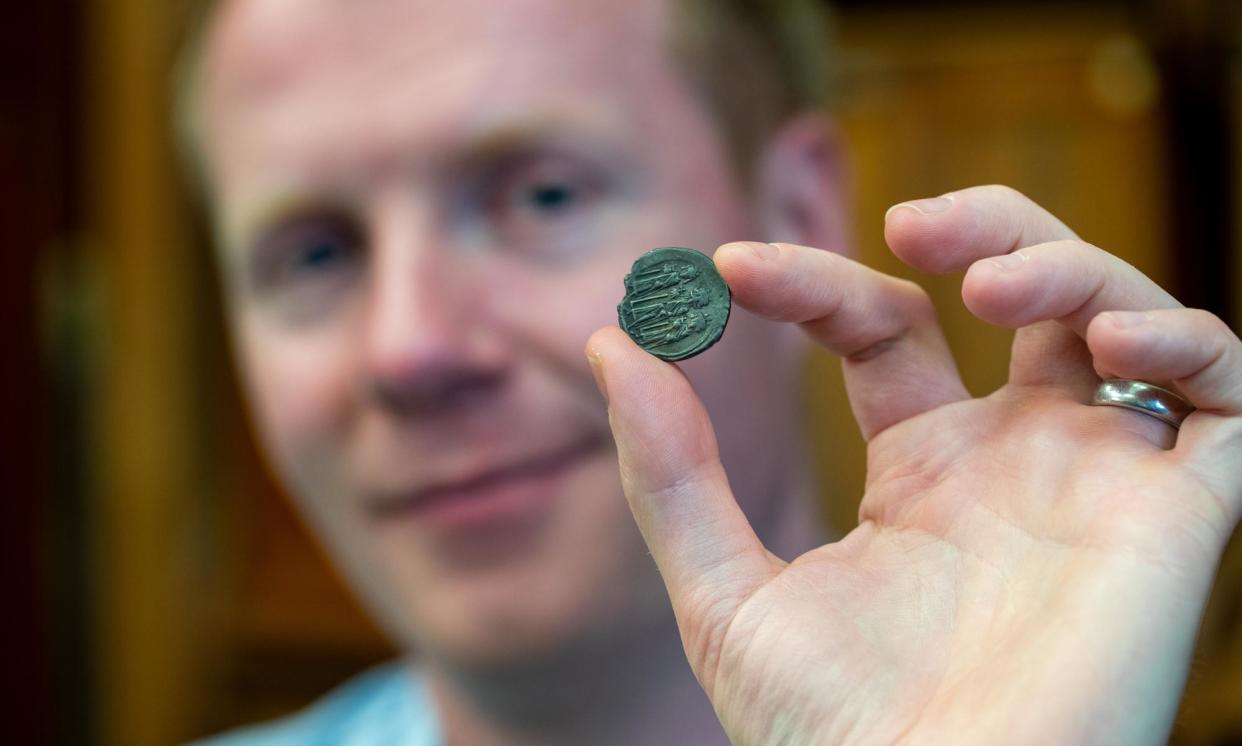Silver coin boom in medieval England due to melted down Byzantine treasures, study reveals

Several decades after the Sutton Hoo burial, starting in about AD660, there was a sudden rise in the number of silver coins in circulation in England, for reasons that have long puzzled archaeologists and historians.
The new rush of silver coinage stimulated trade and helped fuel the development of the new towns springing up at the time – but where did it come from? Were the Anglo-Saxon kings recycling old Roman scrap metal? Or had they found lucrative sources from mines in Europe?
Metallurgical analysis of early medieval coins has revealed the answer: the power brokers of the time were melting down their stockpiles of Byzantine silver treasures, in a type of early medieval quantitative easing that kickstarted the economy of England and established a monetary system that would last for a millennium.
Chemical analysis of coins from the Fitzwilliam Museum in Cambridge has revealed two distinct phases of the silver rush. For almost a century from the 660s, coins were minted from silver bullion that originated in the Byzantine empire on the eastern Mediterranean. Then, after stocks of those treasures were drying up in about 750, silver from a mine in western France came to predominate across Europe, during the reign of Charlemagne.
“This was such an exciting discovery,” said Rory Naismith, a professor of early medieval English history at the University of Cambridge, one of the academics behind the study. “Now we have the first archaeometric confirmation that Byzantine silver was the dominant source behind the great seventh-century surge in minting and trade around the North Sea.”
The coins that were minted were silver pennies – each perhaps equivalent to £20-£30 today – which formed “the bedrock of the English economy” until at least the 16th century, Naismith said.
Intriguingly, the isotopic signature of the Byzantine silver showed it was already decades or more old – most likely it had been prized as a way to display its owner’s power and wealth. The ruler honoured at Sutton Hoo, thought to be Raedwald of East Anglia, was buried with a collection of Byzantine silver bowls and other items which, if melted down, could have made 10,000 pennies, the authors say.
“It’s fair to say we were surprised by this result,” said Dr Jane Kershaw, an associate professor at Oxford University’s school of archaeology and the study’s lead author. “We know of some surviving Byzantine silver from Anglo-Saxon England, most famously from Sutton Hoo, but far greater amounts of Byzantine silver must have originally been held in Anglo-Saxon stores.”
She added: “This was quantitative easing – elites were liquidating silver stored in valuable objects and using that silver to make coins that then circulated widely. It would have had a big impact on people’s lives. Far more people than before would have used coined money and thought in terms of monetary values.”
Not only rulers but also powerful monasteries minted their own coins, said Naismith. “There wasn’t a Bank of England at this stage – if you want some coins, you make some coins. You just need to be someone who’s got the wealth to do it.”
By the middle of the eighth century, however, the silver pennies were becoming lighter and made with less silver as stocks of the Byzantine bullion ran low. Around this time, the researchers found, it was increasingly replaced with silver from a mine at Melle, in western France.
Naismith said the new research “shows how connections both near and far are really important to the economy [of this period]. It shows that if people in England wanted to have a complex economy with currency, they couldn’t just rely on the resources at home – they needed to deal with people in the Mediterranean, in France, in all sorts of other places.
“It shows interdependency, and how connections and networks have been fundamental to economic success for hundreds and hundreds of years.”
The research is published in Antiquity.


